- Home
- F. Scott Fitzgerald
I'd Die For You
I'd Die For You Read online
FSF’s French driver’s license, 1931.
Thank you for downloading this Simon & Schuster ebook.
* * *
Get a FREE ebook when you join our mailing list. Plus, get updates on new releases, deals, recommended reads, and more from Simon & Schuster. Click below to sign up and see terms and conditions.
CLICK HERE TO SIGN UP
Already a subscriber? Provide your email again so we can register this ebook and send you more of what you like to read. You will continue to receive exclusive offers in your inbox.
Contents
Introduction
Editorial Note
The I.O.U. (1920)
Nightmare (Fantasy in Black) (1932)
What to Do About It (1933)
Gracie at Sea (1934)
Travel Together (1935/6)
I’d Die for You (The Legend of Lake Lure) (1935/6)
Day Off from Love (1935/6)
Cyclone in Silent Land (1936)
The Pearl and the Fur (1936)
Thumbs Up (1936)
Dentist Appointment (1936/7)
Offside Play (1937)
The Women in the House (Temperature) (1939)
Salute to Lucy and Elsie (1939)
Love Is a Pain (1939/40)
The Couple (n.d.)
UNCOLLECTED STORIES
Ballet Shoes (Ballet Slippers) (1936)
Thank You for the Light (1936)
Acknowledgments
Works Consulted
About the Author
Explanatory Notes
F. Scott Fitzgerald, Cannes, 1929.
Introduction
. . . it isn’t particularly likely that I’ll write a great many more stories about young love. I was tagged with that by my first writings up to 1925. Since then I have written stories about young love. They have been done with increasing difficulty and increasing insincerity. I would either be a miracle man or a hack if I could go on turning out an identical product for three decades.
I know that is what’s expected of me, but in that direction the well is pretty dry and I think I am much wiser in not trying to strain for it but rather to open up a new well, a new vein. . . . Nevertheless, an overwhelming number of editors continue to associate me with an absorbing interest in young girls—an interest that at my age would probably land me behind bars.
—F. Scott Fitzgerald to Kenneth Littauer, editor of Collier’s magazine, 1939
After his sensational start as a professional writer in 1919, F. Scott Fitzgerald was increasingly stereotyped as a writer of what he himself had dubbed “the Jazz Age.” Readers, and editors, anticipated from him standard romances, poor boys wooing rich girls, parties and glamour and glib flappers. When he tried something different, in a darker and deeper historical decade, and as a mature man who had lived through much pain, Fitzgerald found it very difficult to break out of this early stereotype. The young writer surrounded by campus life at Princeton (This Side of Paradise) becoming part of a new, golden couple (The Beautiful and Damned) and then the creator and chronicler of the Jazz Age (the story collections of the 1920s, and The Great Gatsby) gives way straight to The Crack-Up in most literary biographies and readers’ conceptions of Fitzgerald. He wanted, as he put it, to “open up a new well, a new vein.” Unfortunately, only a very few appreciated what he was trying to do.
These stories are about divorce and despair; working days and lonesome nights; smart teenagers unable to attend college or find a job during the Great Depression; American history, with its wars, its horrors, and its promises; sex, with marriage thereafter—or not; and the wild, bright vitality and grinding poverty of New York City, a place Fitzgerald truly loved and understood in all its possibilities, shallowness, and ugliness. They show him not as a “sad young man” growing old, and trapped in the golden days of his own recent past, but at the fore of Modern literature, in all its experimentalism and developing complexities.
***
F. Scott Fitzgerald, graying and chunking up, is reputedly one of the most difficult authors from whom editors may wangle stories these days. He is the literary symbol of an era—the era of the new generation—and editors continue to want stories of flask gin and courteous collegiates preceding ladies through windshields on midnight joy rides. The public has acquired this Fitzgerald taste, too. But Fitzgerald has taken an elderly and naturally serious turn. Mellowed is the term. He wants to write mellowly, too. And if they won’t let him he won’t write at all. So there.
—O. O. McIntyre, “New York Day by Day” column, 1936
Contemporary editors of popular, mass-market magazines at the time were not philistines, of course. However, there were good reasons for them to shy away from what Fitzgerald was writing by the mid-1930s; some of the stories are dark and stark. Only one editor fully saw the merits of what Fitzgerald was trying to do and published him consistently—Arnold Gingrich, of Esquire, a novelist himself. Fitzgerald sold the brilliant Pat Hobby stories to Esquire for $200 or $250 apiece in the two years before his death. (This was a low price to Fitzgerald, but not for a writer during the Depression; and not if you consider its relative worth, when according to the 1940 U.S. Census the average annual income was just over $1,000.) Gingrich encouraged Fitzgerald to turn his fine chronicles of a failed, drunken, Irish-American screenwriter into a novel. But even Gingrich wouldn’t go for some stories; Fitzgerald wrote about young men worrying over venereal disease and having gotten sixteen-year-olds pregnant, and Esquire said no thanks.
Most of these stories are from the days when America, and the world, was in the Great Depression. Fitzgerald’s fortunes, so high just a few years before, had fallen with the country’s. He was often sick, often broke, and anxiously shuttling between the Baltimore area—where he and Zelda had settled with their daughter, Scottie—and a string of health resorts in the North Carolina mountains. After a breakdown in Europe in 1930, Zelda was hospitalized in February 1932 at the Phipps Psychiatric Clinic of Johns Hopkins Hospital in Baltimore. For the rest of Fitzgerald’s life, and hers, Zelda would be in and out of costly private clinics and hospitals; the pressure Scott put on himself to earn enough money to pay for these was immense. From early 1935, Fitzgerald’s own health was a concern to him, too, and despite his fear of a recurrence of the tuberculosis with which he’d been diagnosed as a young man, he complicated matters by smoking and drinking to excess.
However, the first story in this collection, “The I.O.U.,” comes from Fitzgerald’s earliest days as a writer; and the last complete ones, “The Women in the House” and “Salute to Lucy and Elsie,” from a stint in Hollywood in 1939 when he had quit drinking and was eagerly working on a new novel, published after his death as The Last Tycoon. There is writing from every stage of his well-chronicled career—the youth reveling in bright days and nights of success and celebrity; the husband and father at thirty suddenly plunged into a world of doctors and hospitals because of his wife’s illness; a struggling man in poor health himself, looking for that new vein to open up for his own writing; and, above all, a professional writer who never failed to take inspiration and energy from the American landscape and personalities around him. That hunger never ended for F. Scott Fitzgerald, and these stories show it.
***
Is there any money in collections of short stories?
—Fitzgerald to his agent, Harold Ober, 1920
Short stories were, from the first, Fitzgerald’s bread and butter. When Princeton’s president, John Grier Hibben, wrote him to complain of, among other things, the characterization of a shallow university and its students in his story “The Four Fists” (1920), Fitzgerald replied, “I wrote it in desperation one evening because I had a three inch
pile of rejection slips and it was financially necessary for me to give the magazines what they wanted.”
To give the magazines what they wanted: that was Fitzgerald’s brief as a young writer, and he continued in this very lucrative mode through the 1920s. He sold his work for money and was acutely aware of that fact and of how much he could make, quickly, with short stories, as opposed to waiting until he had enough of a novel complete to consider serialization. He and his family lived well, but after the immense success of his first two novels, The Great Gatsby (1925) did not sell well, and he needed money. Fitzgerald’s discouragement over Gatsby’s lukewarm reception helped to keep him writing short stories for the Saturday Evening Post and spurred him to turn to work on screenplays in Hollywood as the Jazz Age ended. Fitzgerald was walking the tightrope between art and commerce, and did it as well as any writer of his generation.
He was also quite aware of what was his best writing and what was, as he termed it, hack work. Fitzgerald never lied to himself, or anyone else, about the difference between his commercially successful and his imaginatively satisfying stories. He was delighted when the two categories coincided, when stories he valued, like “Babylon Revisited,” “Winter Dreams,” “The Rich Boy,” and the stories about Basil Duke Lee, sold for a high price. He always wished the ones he himself thought best would sell better. “I am rather discouraged that a cheap story like The Popular Girl written in one week while the baby was being born brings $1500. + a genuinely imaginative thing into which I put three weeks real entheusiasm [sic] like The Diamond in the Sky [“The Diamond as Big as the Ritz”] brings not a thing,” he wrote to his agent, Harold Ober, in 1922. “But, by God + Lorimer, I’m going to make a fortune yet.” George Horace Lorimer, the Yale graduate who edited the Saturday Evening Post from 1899 to 1936, paid Fitzgerald well for his writing: a fortune, in fact, for a young writer. In 1929 the Post began to pay him $4,000 per story, the equivalent of over $55,000 today. Yet Fitzgerald chafed under the golden chains, telling H. L. Mencken in 1925, just after Gatsby was published:
My trash for the Post grows worse and worse as there is less and less heart in it—strange to say my whole heart was in my first trash. I thought that the Offshore Pirate was quite as good as Benediction. I never really “wrote down” until after the failure of the Vegetable and that was to make this book [Gatsby] possible. I would have written down long ago if it had been profitable—I tried it unsuccessfully for the movies. People don’t seem to realize that for an intelligent man writing down is about the hardest thing in the world.
To his editor Maxwell Perkins at Scribner, in the same year, he was blunter and briefer: “The more I get for my trash the less I can bring myself to write.”
Fitzgerald always considered himself a novelist, though he was a superb writer of short fiction—not a more humble form of writing than the novel, just briefer. His short stories, loved and well-known, stand alone, but they were often a testing ground for him, a place for rough drafts, an initial space for ideas and descriptions, characters and places, elements of which would find their way into his next novel. The ledger of his life and writings, which Fitzgerald kept until 1938, lists many stories in the “Record of Published Fiction” section as “stripped and permanently buried.” That “stripping” process is readily visible in his tear sheets and on magazine copies of the stories he published, where Fitzgerald revised, redacted, and indicated passages that later appeared in The Beautiful and Damned, The Great Gatsby, and Tender Is the Night.
The stories in this collection, most of which are from the middle and late 1930s, feature lines that will be familiar to those who have read Fitzgerald’s working papers (published as The Notebooks of F. Scott Fitzgerald in 1978) and The Love of the Last Tycoon, his final novel, left unfinished at his death.
***
Is there money in writing movies? Do you sell scenarios?
—Fitzgerald to Harold Ober, December 1919
The pull and possibilities of Hollywood, and of writing scenarios and screenplays for movies, were a lure for Fitzgerald from his earliest writing days. In September 1915, when he was a sophomore at Princeton, the Daily Princetonian ran an advertisement that read: “Special Notice to Students Who Fail / Motion Picture Studio Work opens an almost immediate field for substantial earnings to young men who possess some natural ability.” This equation of motion picture work and failing was writ large for Fitzgerald from his first time in Hollywood. Though several of his stories and two of his novels were made into movies in the 1920s, he did not like them—he and Zelda thought the 1926 film version of The Great Gatsby, now lost, was “rotten.” Nonetheless, in January 1927 the Fitzgeralds settled at the Ambassador Hotel in Los Angeles for three months while Scott worked on a screenplay, made to order, for Constance Talmadge. Talmadge, nicknamed “Brooklyn Connie,” was a major silent star trying to break into talkie comedies. At first, he and Zelda enjoyed meeting and socializing with movie stars, but it soon wore thin. The screenplay was rejected, and the Fitzgeralds headed home to the East. Zelda reported that Scott “says he will never write another picture because it is too hard, but I do not think writers mean what they say[.]”
She was right. Those unremarkable sales and mixed reviews for The Great Gatsby changed Fitzgerald as a writer. He threatened a future course of action almost immediately, writing to Perkins from Europe in the spring of 1925:
In all events I have a book of good stories for the fall. Now I shall write some cheap ones until I’ve accumulated enough for my next novel. When that is finished and published I’ll wait and see. It if will support me with no more intervals of trash I’ll go on as a novelist. If not I’m going to quit, come home, go to Hollywood and learn the movie business.
In 1931, Fitzgerald went back to Hollywood, again for the money, for another miserable few months that proved creatively fruitless and personally taxing. Tender Is the Night, the novel he had been working on, remained unfinished. And this time, Zelda was not with Scott in Los Angeles; she was at her parents’ home in Montgomery, Alabama, on the verge of a breakdown that would send her into a hospital the following spring. However, her judgment, in writing to her husband in Hollywood in November 1931, could not be sounder: “I’m sorry your work isn’t interesting. I had hoped it might present new dramatic facets that would make up for the tediousness of it. If it seems too much drudgery and you are faced with ‘get to-gether and talk-it-over’ technique—come home, Sweet. You will at least have eliminated Hollywood forever. I wouldn’t stay and waste time on what seems an inevitable mediocrity and too hard going.”
Though he failed—again—in Hollywood in 1931, Fitzgerald, needing money—again—returned there for good in the summer of 1937. The third time was not the charm. In the title story of this collection, we see his view of the movie business—the inherent corrosiveness and the danger to individual creativity. Arnold Gingrich had warned Fitzgerald, in 1934, not to go back, and told him why in no uncertain terms: “It would be awful to see you piss away your talent in Hollywood again and I hope it won’t come to that. Because, regarding the written word like a musical instrument, you are the supreme virtuoso—nobody can draw a purer finer tone from the string of an English sentence—and what the hell has the written word to do with Hollywood?”
As Fitzgerald wrote to Perkins shortly before he left for the West Coast, with cold self-knowledge and prescience, “Each time I have gone to Hollywood, in spite of the enormous salary, has really set me back financially and artistically. . . . I certainly have this one more novel [The Love of the Last Tycoon], but it may have to remain among the unwritten books of this world.” Fitzgerald’s bills were large, for everything from his own living expenses to Zelda’s private sanitarium near Asheville, North Carolina, to Scottie’s schools. And the contract from Metro-Goldwyn-Mayer was large, too—$1,000 a week for his work as a script doctor. The last few of his stories were written in the time he could borrow from work on the screenplays of others—screenplays it was mind-numbing to read, a
nd on which his dismissive comments survive in the margins. The Hollywood work discouraged and literally sickened him, and his lack of enthusiasm for the place is evident in the weakness of his screenplay scenarios. Yet that MGM contract saved Fitzgerald when he was deeply in debt, and he found the material for The Love of the Last Tycoon there. He was happy when he died, working hard on that “one more novel,” but the psychic and creative costs of selling his talent and time were immense, and surely contributed to that novel remaining unfinished.
***
Fitzgerald thought some of the stories in I’d Die for You were excellent, and was deeply disappointed, for personal more than financial reasons, to have them rejected by editors wanting him to write jazz and fizz, beautiful cold girls and handsome yearning boys. He was a professional writer from his college days, laboring over draft after draft, and regularly continuing to revise even after a story or book was published. His own copy of The Great Gatsby has changes and notations made in his hand that extend from the dedication page to those now-epic concluding paragraphs.
Fitzgerald wanted the hard work he put into writing his stories to be rewarded. He wanted these stories to be published. He tried to have them published. However, most of them come from a decade in his life when he no longer wanted to be edited. Early in his career, he had not minded the changes so much; sometimes editors made them without his knowledge, which angered him later, and sometimes he held his ground when it mattered. He complained in 1922 of the “reams of correspondence” he had to have with Robert Bridges, the editor of Scribner’s Magazine, “over a ‘God damn’ in a story called The Cut Glass Bowl” (but his phrase the “God damn common nouveau rish” stood). In the 1930s, Fitzgerald was increasingly uncompromising about deletions, softenings, sanitizings—even when one of his oldest friends and a consummately professional agent, Ober, asked him to make revisions; and even when Gingrich, whose support of the Pat Hobby stories kept Fitzgerald both solvent and published, asked. He preferred to let the stories lie in wait. The right time might have come during his lifetime, if he had only lived longer.

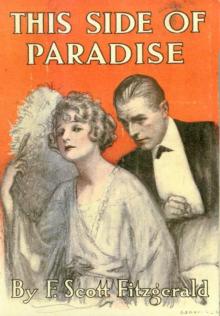 This Side of Paradise
This Side of Paradise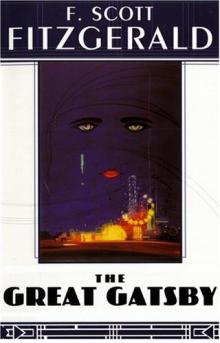 The Great Gatsby
The Great Gatsby Tender Is the Night
Tender Is the Night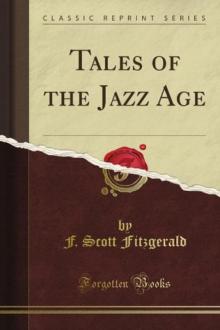 Tales of the Jazz Age (Classic Reprint)
Tales of the Jazz Age (Classic Reprint)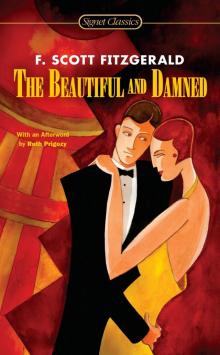 The Beautiful and Damned
The Beautiful and Damned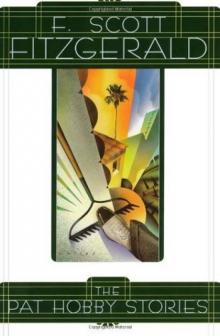 The Pat Hobby Stories
The Pat Hobby Stories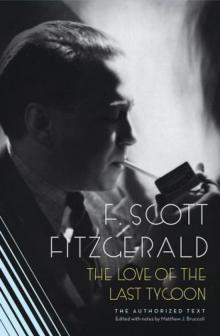 The Love of the Last Tycoon
The Love of the Last Tycoon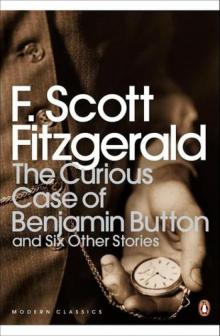 The Curious Case of Benjamin Button and Six Other Stories
The Curious Case of Benjamin Button and Six Other Stories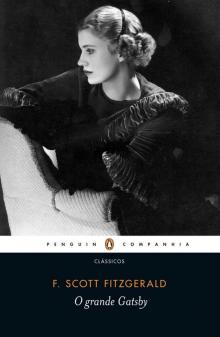 O Grande Gatsby (Penguin)
O Grande Gatsby (Penguin)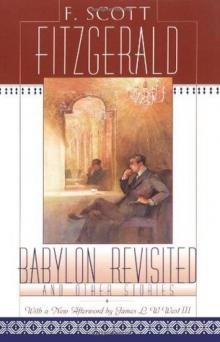 Babylon Revisited and Other Stories
Babylon Revisited and Other Stories The Crack-Up
The Crack-Up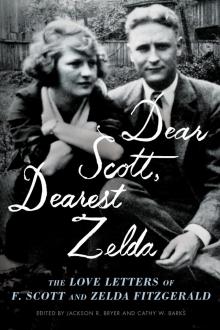 Dear Scott, Dearest Zelda
Dear Scott, Dearest Zelda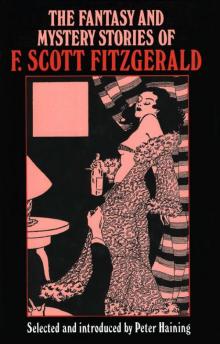 The Fantasy and Mystery Stories of F Scott Fitzgerald
The Fantasy and Mystery Stories of F Scott Fitzgerald Flappers and Philosophers
Flappers and Philosophers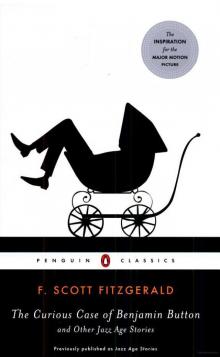 The Curious Case of Benjamin Button and Other Jazz Age Stories (Penguin Classics)
The Curious Case of Benjamin Button and Other Jazz Age Stories (Penguin Classics)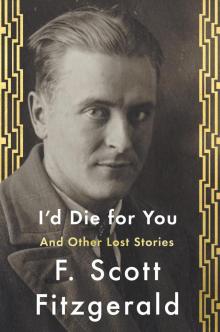 I'd Die For You
I'd Die For You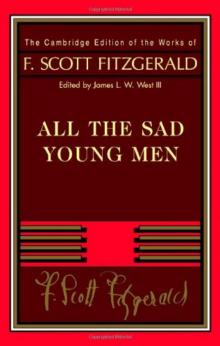 All the Sad Young Men
All the Sad Young Men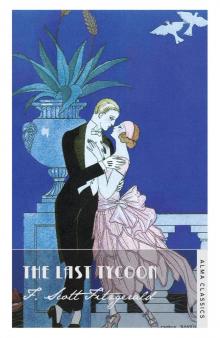 The Last Tycoon
The Last Tycoon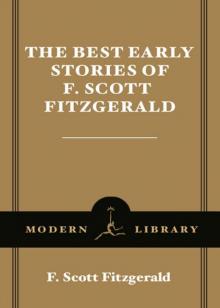 The Best Early Stories of F. Scott Fitzgerald
The Best Early Stories of F. Scott Fitzgerald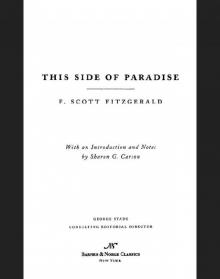 This Side of Paradise (Barnes & Noble Classics Series)
This Side of Paradise (Barnes & Noble Classics Series)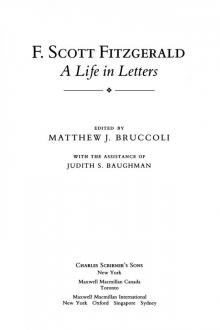 A Life in Letters
A Life in Letters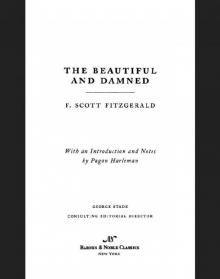 Beautiful and Damned (Barnes & Noble Classics Series)
Beautiful and Damned (Barnes & Noble Classics Series)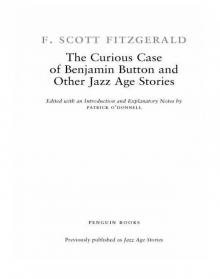 The Curious Case of Benjamin Button and Other Jazz Age Stories
The Curious Case of Benjamin Button and Other Jazz Age Stories Tales of the Jazz Age
Tales of the Jazz Age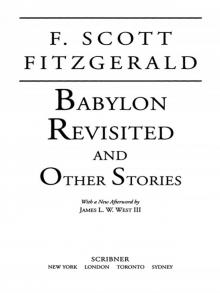 Babylon Revisited
Babylon Revisited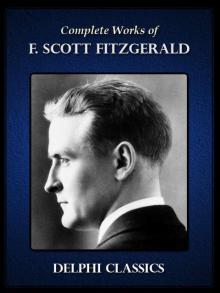 Complete Works of F. Scott Fitzgerald UK (Illustrated)
Complete Works of F. Scott Fitzgerald UK (Illustrated)